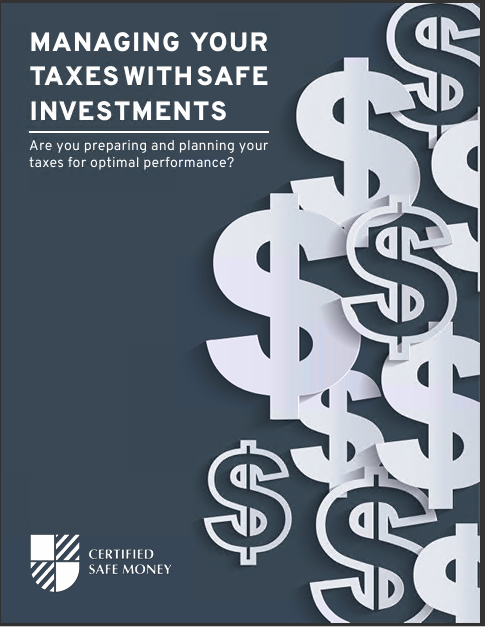Key Takeaways
- High-yield savings accounts offer flexibility and liquidity with modest returns, ideal for short-term savings and emergency funds.
- Fixed Index Annuities provide potential for higher returns with principal protection, suitable for long-term retirement planning.
High-Yield Savings vs. Fixed Index Annuities: Which Provides Better Returns?
Choosing the right investment vehicle can significantly impact your financial future. High-yield savings accounts and Fixed Index Annuities (FIAs) are two popular options, each offering unique benefits and considerations. This article explores these two financial products, comparing their returns, features, and suitability for different financial goals to help you make an informed decision.
Understanding High-Yield Savings Accounts
High-yield savings accounts are a type of savings account that offers a higher interest rate than traditional savings accounts. These accounts are typically offered by online banks and financial institutions, which can afford to provide better rates due to lower overhead costs.
Benefits of High-Yield Savings Accounts
- Liquidity and Flexibility: High-yield savings accounts allow easy access to your funds. You can deposit and withdraw money as needed without penalties, making them ideal for emergency funds and short-term savings.
- FDIC Insurance: Deposits in high-yield savings accounts are insured by the Federal Deposit Insurance Corporation (FDIC) up to $250,000 per depositor, providing a secure place for your money.
- No Market Risk: Unlike investments in the stock market, high-yield savings accounts are not subject to market fluctuations. Your principal is secure, and you earn a predictable interest rate.
Considerations for High-Yield Savings Accounts
- Modest Returns: Although high-yield savings accounts offer better interest rates than traditional savings accounts, their returns are still relatively modest compared to other investment options.
- Inflation Risk: The interest earned on high-yield savings accounts may not keep pace with inflation, potentially reducing the purchasing power of your savings over time.
- Limited Growth Potential: These accounts are designed for safety and liquidity rather than significant growth, making them less suitable for long-term investment goals.
Exploring Fixed Index Annuities
Fixed Index Annuities (FIAs) are insurance products that offer a guaranteed minimum interest rate with the potential for additional interest based on the performance of a specified market index, such as the S&P 500. FIAs combine elements of fixed annuities and variable annuities, providing both security and growth potential.
Benefits of Fixed Index Annuities
- Principal Protection: FIAs guarantee the principal amount, ensuring that investors do not lose their initial investment, making them attractive to conservative investors.
- Tax-Deferred Growth: Earnings in an FIA grow on a tax-deferred basis, allowing for potential compounding without the drag of annual taxes, enhancing growth potential over time.
- Potential for Higher Returns: FIAs offer the possibility of higher returns than traditional fixed annuities, as they are linked to the performance of a market index. However, these returns are typically capped or subject to participation rates.
- Lifetime Income Options: Many FIAs offer options for lifetime income, providing a steady stream of income in retirement. These options can include guaranteed payments for life, adding financial security in retirement.
- Inflation Protection: Some FIAs offer features that adjust income payments based on inflation rates, helping to preserve purchasing power over time.
Considerations for Fixed Index Annuities
- Caps and Participation Rates: The growth potential of FIAs is often limited by caps and participation rates, which can restrict the amount of interest credited based on the index performance. For instance, if an FIA has a cap of 5% and the index earns 8%, only 5% will be credited to the annuity.
- Complexity and Fees: FIAs can be complex products with various fees, including administrative fees, mortality and expense risk charges, and surrender charges if funds are withdrawn early. Understanding these fees is crucial for making an informed decision.
- Limited Liquidity: Access to funds in an FIA can be restricted, particularly during the initial surrender period, which can last several years. Early withdrawals can result in substantial penalties.
- Potential for Lower Returns: While FIAs provide safety and principal protection, the potential for lower returns compared to traditional investments like stocks and mutual funds can be a drawback for some investors.
- Sales Practices: FIAs are often sold by insurance agents who may have a financial incentive to recommend them, sometimes leading to conflicts of interest.
Comparing Returns: High-Yield Savings vs. Fixed Index Annuities
Risk and Return
High-yield savings accounts offer modest returns with virtually no risk. The interest rates on these accounts are generally higher than traditional savings accounts but lower than the potential returns from market-based investments. The security of FDIC insurance and the absence of market risk make them an attractive option for conservative savers and those seeking a secure place for short-term funds.
In contrast, FIAs offer the potential for higher returns through their linkage to market indexes. While the principal is protected, the interest credited can vary based on the performance of the chosen index, subject to caps and participation rates. This means that during years of strong market performance, FIAs can provide returns that outpace high-yield savings accounts. However, the complexity of FIAs and the limitations on growth require careful consideration.
Tax Considerations
High-yield savings accounts offer interest that is subject to federal and state income taxes in the year it is earned. This can reduce the effective return, particularly for those in higher tax brackets. The simplicity and accessibility of these accounts make them convenient, but the annual tax liability can be a drawback.
FIAs, on the other hand, grow on a tax-deferred basis. This means that earnings within the annuity are not taxed until they are withdrawn, potentially allowing for more substantial growth over time due to compounding. This tax-deferral feature makes FIAs an appealing option for long-term retirement savings, especially for those who expect to be in a lower tax bracket in retirement.
Liquidity and Accessibility
One of the primary advantages of high-yield savings accounts is their liquidity. Account holders can access their funds at any time without penalties, making these accounts ideal for emergency savings and short-term financial goals. The ease of access and absence of withdrawal penalties offer significant flexibility.
In contrast, FIAs often come with limited liquidity. During the initial surrender period, which can range from several years to over a decade, withdrawals may be subject to surrender charges. Even after the surrender period, withdrawals can trigger taxes and penalties if taken before age 59½. The limited access to funds and potential penalties for early withdrawals make FIAs less suitable for those who may need quick access to their money.
Suitability Based on Financial Goals
For Short-Term Savings
High-yield savings accounts are well-suited for short-term savings goals and emergency funds. The combination of liquidity, security, and modest returns makes them an excellent choice for money that may be needed in the near future. Savers can benefit from higher interest rates while maintaining the flexibility to access their funds without penalties.
For Long-Term Growth and Retirement Planning
FIAs are more appropriate for long-term growth and retirement planning. The potential for higher returns, principal protection, and tax-deferred growth make them a strong option for conservative investors seeking to balance safety and growth. The lifetime income options provided by many FIAs can also offer a reliable stream of income in retirement, adding to their appeal for those planning for their golden years.
Combining Both Strategies
For some investors, a combination of high-yield savings accounts and FIAs may be the best approach. High-yield savings accounts can serve as a secure and accessible place for emergency funds and short-term savings, while FIAs can be used to achieve long-term growth and provide income in retirement. By diversifying their savings and investment strategies, individuals can balance liquidity, safety, and growth potential, creating a robust and flexible financial plan.
Choosing the Right Option
Selecting between high-yield savings accounts and Fixed Index Annuities depends on your financial goals, risk tolerance, and time horizon. High-yield savings accounts offer liquidity and security with modest returns, making them ideal for short-term needs and emergency funds. FIAs provide potential for higher returns with principal protection and tax-deferred growth, suitable for long-term retirement planning. By understanding the unique features and benefits of each option, you can tailor your savings and investment strategy to maximize returns and achieve financial security.












